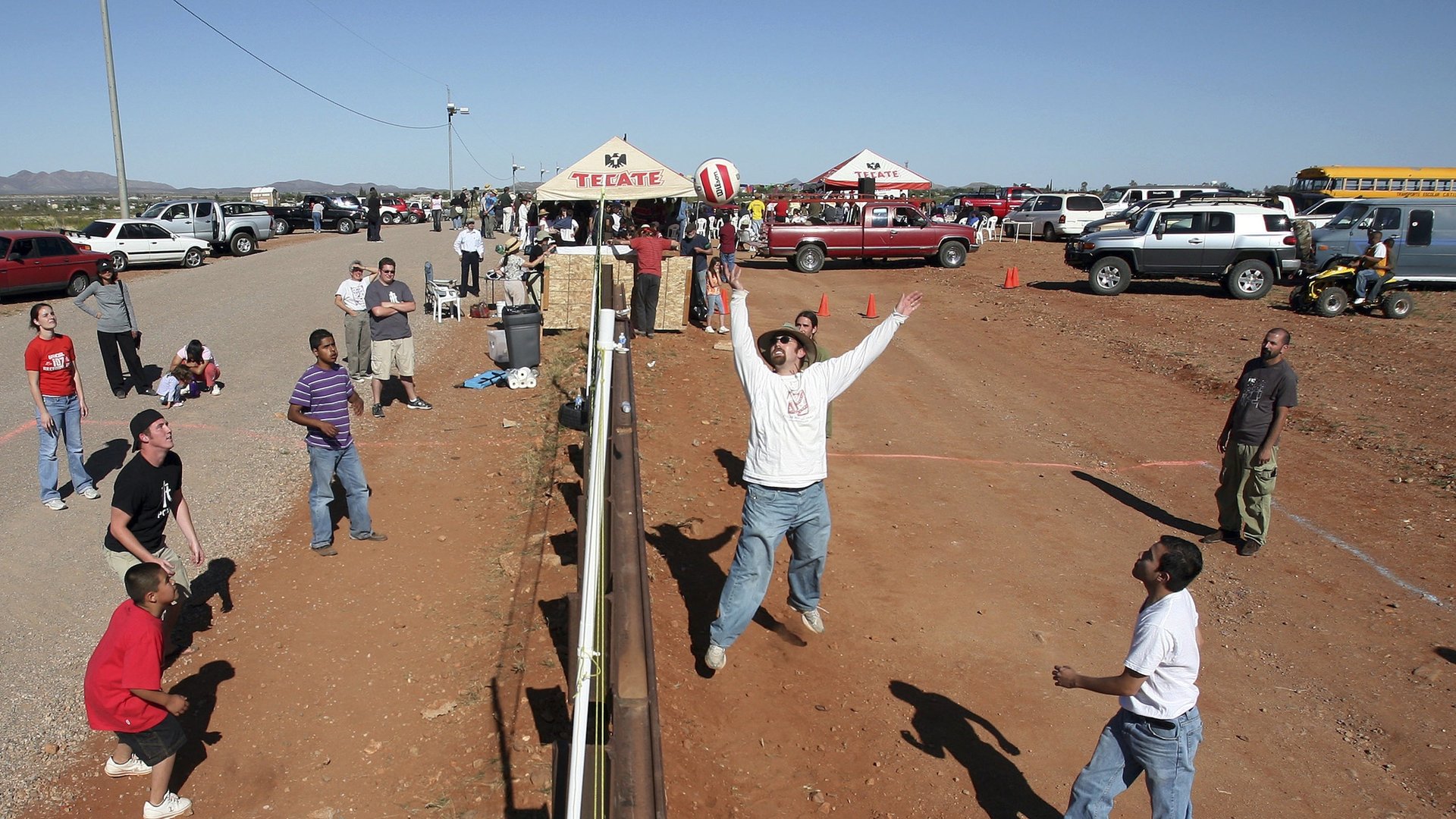Locals are using the US-Mexico border fence as a giant volleyball net
The frontier between the United States and Mexico is the busiest land border in the world. It is also among one of the world’s most heavily regulated and policed border zones—the arid climate of which is responsible for many migrant deaths each year.


The frontier between the United States and Mexico is the busiest land border in the world. It is also among one of the world’s most heavily regulated and policed border zones—the arid climate of which is responsible for many migrant deaths each year.
But it’s also an area that occasionally lends itself to more cheerful pursuits—something you won’t hear about from a number of far-right US politicians, who prefer to frame the US-Mexico border as something like a war zone.
“Wallyball” is an annual tradition in the sister towns of Naco, Arizona, in the United States and Naco, Sonora, in Mexico. Every April, teams from either side of the border face off in this “fast-paced version of volleyball,” reports Rafa Fernandez De Castro for Fusion.
It’s called the “Fiesta Bi-Nacional,” and it’s intended to solidify positive transnational relations between Mexico and the US, despite tensions over migration and other issues. “Wallyball” has been an integral part of Fiesta Bi-Nacional since 1979, and has inspired similar competitions elsewhere along the US-Mexico border. Holiday-makers in the US city of San Diego and the Mexican city of Tijuana have taken up impromptu volleyball matches on the sandy beaches where both countries meet the Pacific Ocean.
“For us, it represents the celebration of the union of two countries,” José Lorenzo Villegas, mayor of Mexican Naco, told Reuters in 2007. “What’s unusual is that both the Mexican and US teams are playing at home, with the fence as the net,” he added.
The border between the US and Mexico is often shadowed by prejudice and morbid media coverage. But “wallyball” is a testament to the great, untapped potential of cooperation on both sides of the fence. Both teams may be playing on their respective “home turf,” but the game is clearly less about where you’re from, and more about than the fun to be had when differences are set aside.